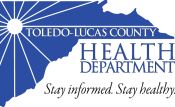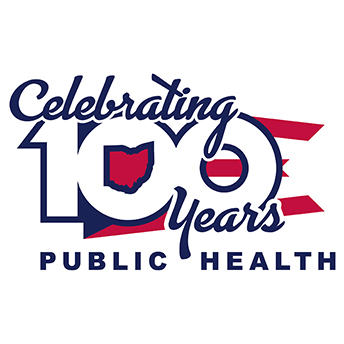Celebrating 100 years of Public Health:
How the past has made public health matter
This year marks the 100th anniversary of two legislative acts that shaped the future of public health in Ohio. The Hughes Act and Griswold Act, both enacted in 1919, established the modern day organization of local health departments and laid the foundation for public health efforts still in effect today.
As part of National Public Health Week, April 1-7, the Toledo-Lucas County Health Department is joining local health departments throughout Ohio to collectively celebrate 100 years of public health with a coordinated promotional campaign theme, “How the past has made public health matter.”
Over the past 100 years, since the enactment of Hughes-Griswold, public health has had a significant impact on health and quality of life: People are living an average of 25 years longer; small pox, once a common, deadly occurrence, has been eradicated; motor vehicle fatalities have been reduced by 90 percent, and deaths from sudden infant death syndrome has decreased 50 percent.
Additional accomplishments of public health include: immunizations for children and adults, the control of infectious diseases, reduction of tobacco use, safer and healthier foods; better maternal and infant healthcare; increased preventative screenings, and public health preparedness and response.
The Hughes-Griswold acts were a continuation of public health organization that began with founding of the state board of health in 1886 and a 1906 law requiring each city, village, and township send a delegate to the state board’s annual meeting. This is how many city health departments first started.
As a result of the 1906 law, there were 2,158 independent health units in Ohio representing cities, villages, and townships. The variety and quality of services varied greatly. After a statewide smallpox epidemic in 1917 and the national influenza epidemic in 1918, it became clear, a more comprehensive and formalized approach to public health was necessary.
The Hughes-Griswold acts provided that approach and as written in the 1920 Ohio Public Health Journal of the Ohio State Board of Health, it “strengthens the hands of those charged with responsibility for people’s health as nothing else could have been done.”
Hughes-Griswold eliminated the village and township units and based local health administration onto cities and counties. A uniform structure for each health district was established, including boards of health, who should be on the board, plus the creation of the district advisory council which appointed individuals to the board of health. The process of combining districts was also outlined. A minimum of three full-time employees were required for each district: a health officer, a public health nurse, and a clerk.
The legislation also spoke to specific “duties” for each district including basic services still performed today by local health departments. Those services include data collection, control and prevention of communicable disease, food safety, birth and death records, inspection and abatement of nuisances, and as written in the original legislation, “all steps necessary to protect the public’s health and to prevent disease.”
While the last 100 years have been filled with much success and progress, the next 100 years promises to show the ever-growing presence and importance of public health in our everyday lives. This includes the continual emphasis on the importance of immunizations, maternal and child health, food safety and vector surveillance, there are new horizons including harm reduction efforts, health equity, national accreditation, food deserts and cross-sector partnerships.

